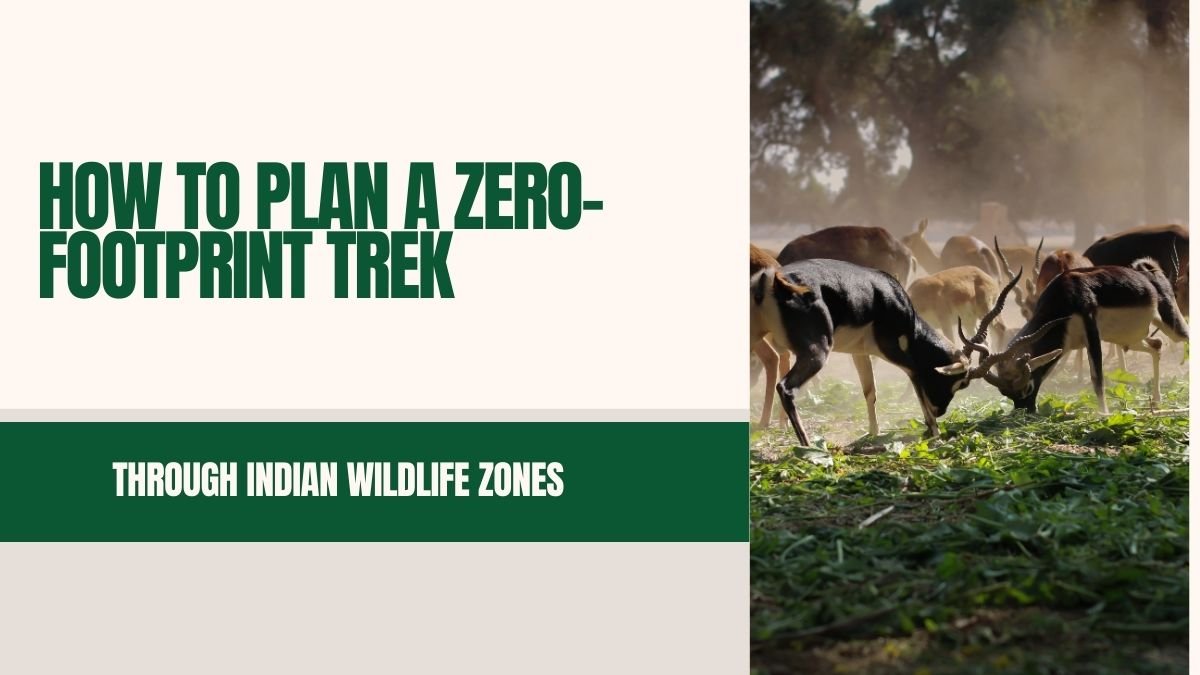Zero-Footprint Trekking: Celebrate Nature and Save It
It is a dream to be trekking at this moment in some peaceful mountain valleys, with the air fresh, the sky clear, and lush trees mingling before you. Suddenly, however, a plastic bottle, a biscuit wrapper, and a cup come into view, taking away all the glory. This is the reason why the concept of “zero-footprint trekking” is gaining importance nowadays. These are those activities that take care of nature without leaving behind physical evidence of their passage. Therefore, this aspect needs to be appreciated.
The Importance of Zero-Footprint Trekking
With so many trekking routes existing in India-from the icy Himalayas to the rainy hills of the Western Ghats-it’s no wonder that these places see millions of people every year. That’s just one of the reasons why if every single tourist carries deposits of a little rubbish, these places would soon be trashed.
For example, recently, these areas have been much disturbed by plastic litter in trails such as Triund Trek, in Himachal, and Roopkund Trek, in Uttarakhand. Not only does it breed ugliness, but it is also a menace to the flora and fauna around it.
Hence, now it is the necessity for every traveler to act responsibly.
Things to Prepare for a Trek
Choose the Right Operator and Trail
Then first, choose a trekking company that is sustainable, for example, there are operators who set refill stations for water and do not distribute water bottles. They may also hire local guides which would increase local jobs and promote cultural exchange.
Pack Properly
One of the most significant things that one can do is to stop using plastic packages or any disposable items. Instead, use containers made of steel, cloth bags, and reusable bottles. Instead of carrying the whole pack of biscuits, you can use a small box containing only the number of required biscuits.
Use Eco-friendly Gear
Sustainable and eco-friendly products are flooding the market these days. Metal straws, cloth napkins, solid tiffin boxes, and solar torches are a few examples.
Go for Biodegradable Toiletries
Most soaps and shampoos on the shelves find their way into rivers and streams wastefully. So it should become a habit to carry biodegradable toiletries only.
Things to remember throughout the Trek
- Bring Back Everything You Brought With You – Above all, take back whatever is brought here with a small garbage bag.
- Only walk on existing trails – Most of driving excitement, people tend to walk into the grass or forest. This damages delicate plants. For this reason, one has to walk existing trails.
- Protect the Animals – Of course, you will see monkeys, deer or birds while trekking. But doing any feeding or approaching them may turn hazardous. For instance, give chips to monkeys and those monkeys will abandon the jungle food and turn to humans for food.
- Save Water – The rivers and waterfalls are the lifeblood of our mountains. Therefore, don’t wash your dishes directly into them, but if you must, collect the water in a container and use it after going some distance.
- No Fires – As tempting as they may be, campfires have the potential to destroy the forest with just one spark. So bundle up with warm clothes or a sleeping bag.
- Avoid Noisy Activities – The real experience of trekking is to relish the sound of birds, the howling wind in trees, and the murmur of rivers. Loud music and drones disturb this environment and frighten the animals.
After the Trek is Over
As soon as you come down, your primary task should be disposing of all rubbish at the right place. If you cannot find a dustbin along the way, take it to the city. Even a small plastic wrapper may become soil for hundreds of years.
Inspire Others
Fill your friends and social media with your experience. Tell us how you collected trash, saved water, and avoided plastic. Your posts will inspire others.
Support Local Communities
While trekking, walk through villages and meet local people. Eat their food, live in their homes, and buy handmade woolen caps and shawls from Uttarakhand to put money in their pockets and motivate them to appreciate and conserve the forests in their culture.
Pleasure Lies in Leaving No Trace
Zero-footprint trekking means that you won’t have to miss the fun. The real satisfaction lies in coming back from the mountains empty except for memories.
The next time you go trekking, remember these three things:
- Take back what you brought with you.
- Leave nature as it was when you found it.
- Help local communities and culture.
Conclusion
Millions are attracted to the hills and forests in India each year. If everyone left their own little mound of rubbish anywhere, what we see today will be empty spaces for future generations.
Zero-footprint trekking matters for all of us, not only for tomorrow but for future generations as well. It is not just another form of travel; it also needs to be accounted for. If we all take small steps together, we will see a big difference.








